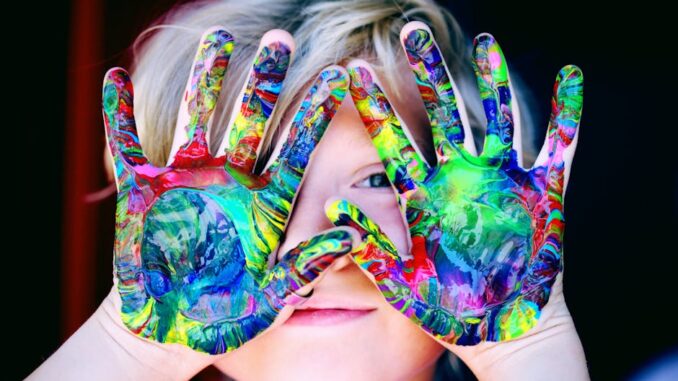
Summary
Pediatric myopia clinics prioritize early intervention and research to combat the rising prevalence of myopia in children. These clinics employ advanced diagnostic tools and treatments, such as low-dose atropine, specialized contact lenses, and increased outdoor time. Furthermore, ongoing research plays a crucial role in refining treatment strategies and improving long-term outcomes for children with myopia.
** Main Story**
Protecting Young Eyes: A New Era in Myopia Management
Myopia, better known as nearsightedness, is a common vision issue that affects a lot of kids these days. And the rates are climbing, especially in young children. Because of this, we’re seeing more and more specialized pediatric myopia clinics popping up, which is a good thing! These clinics are all about getting in early, doing research, and trying to slow down how quickly myopia gets worse. The goal? To help reduce any potential long-term eye problems.
Early Intervention: It’s a Game Changer
Seriously, catching myopia early is key. The sooner you find it, the faster you can jump in with treatments. This can really slow down the progression and lower the chances of more serious eye issues down the road. It’s like catching a small leak before it turns into a flood!
State-of-the-Art Tools for Spot-On Assessments
Pediatric myopia clinics aren’t messing around when it comes to figuring out what’s going on with a child’s vision. They use cutting-edge stuff to check and keep tabs on myopia. Take optical biometry, for instance. It measures the eye’s axial length super accurately, which helps doctors track how things are progressing. And sometimes, genetic testing might be used to give you a better idea of a kid’s risk factors.
Innovative Treatment Options
These clinics offer more than just the standard glasses and contacts. They’ve got some pretty cool options to slow down the progression of myopia and protect those peepers for the long haul.
-
Low-Dose Atropine: These eye drops have a small amount of atropine and have shown promise in slowing myopia’s march forward, especially in kids who are at higher risk. It’s not a perfect solution, and there are potential side effects to consider, but it can be a useful tool.
-
Specialized Contact Lenses: Multifocal and orthokeratology (Ortho-K) lenses are designed to reshape the cornea. Now, that sounds intense, but it can help reduce how quickly myopia gets worse. I’ve heard some patients say they feel like they’re not getting enough oxygen when wearing them for too long.
-
Get Outside!: Believe it or not, simply spending more time outdoors is linked to a lower risk of developing myopia. Yeah, really. So, encouraging kids to play outside more is a surprisingly effective way to help. I know, who would have thought?
Research: Always Pushing the Boundaries
Research is a big deal at these clinics. They’re constantly collecting data and doing clinical trials to fine-tune their treatments. This means the care they provide is based on the latest evidence. You can’t argue with evidence-based medicine.
Teamwork Makes the Dream Work
These clinics often have a team of specialists working together, pediatric optometrists, ophthalmologists, even retina specialists. This way, each child gets the best possible care, tailored to their specific needs. By collaborating closely, these pros create custom treatment plans for each patient. Not bad, eh?
A Brighter Future for Pediatric Myopia Care?
Pediatric myopia clinics are definitely a step in the right direction for managing childhood myopia. With their focus on early action, advanced tools, cool treatments, and ongoing research, there’s real hope for better eye health outcomes. As we keep learning more about myopia, these specialized clinics will become even more critical in protecting the vision of future generations. What do you think, is there a better alternative?
Going Beyond the Clinic: Tips for Parents
Parents aren’t just bystanders here, they can actively protect their kids’ eye health. Here are some tips to help lower the risk of myopia and support ongoing treatment:
-
Screen Time Limits: Encourage regular breaks from screens and suggest activities that don’t involve staring at something up close. It’s a tough sell in the age of iPads, I know.
-
Get Outdoors More: Try to get at least two hours of outdoor time per day. Apparently, that’s the magic number for lowering the risk of myopia. Who knew?
-
Regular Eye Exams: Schedule regular eye exams, starting early. It’s the best way to catch any problems early on.
-
Be Supportive: Encourage kids to stick to their treatment plans, whether it’s wearing glasses, contacts, or using eye drops. That’s all there is to it.
By teaming up—parents, healthcare providers, and researchers—we can make some serious progress in fighting childhood myopia and making sure kids have healthy vision for life.


So, more outdoor time could save our vision? Guess I’ll trade my blue light glasses for sunglasses! Maybe we should also look at funding initiatives to make outdoor spaces more accessible and engaging for kids. That sounds like a win-win!
That’s a fantastic point! Focusing on funding for accessible outdoor spaces would be a game-changer. Imagine creating parks and recreational areas designed to encourage kids to spend more time playing outside. It’s not just about vision; it’s about overall health and well-being too. Thanks for bringing up this important aspect!
Editor: MedTechNews.Uk
Thank you to our Sponsor Esdebe